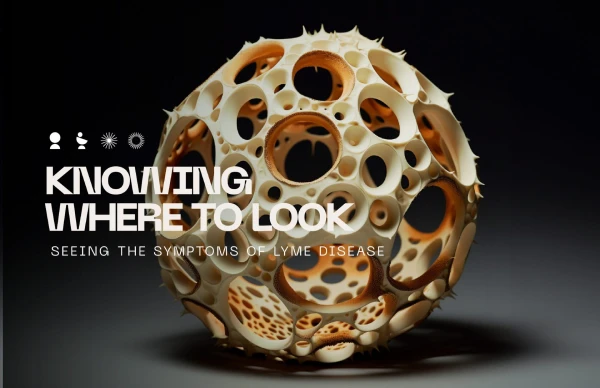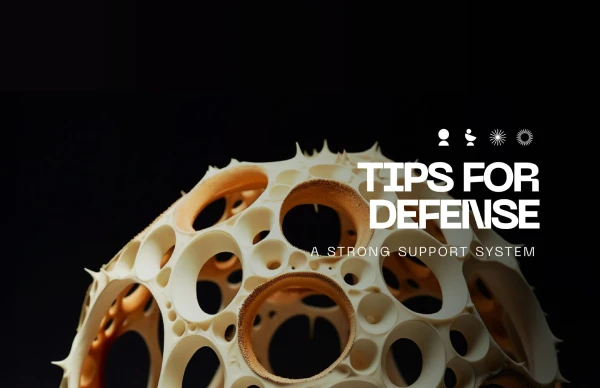Blog
Lyme disease – here is a treatment protocol that may work

Contents
What is Lyme disease?
Symptoms of Lyme disease at different stages
Peptide therapy for Lyme disease
4 best peptides for Lyme disease
Tips for preventing Lyme disease
Optimize your health with peptide therapy for Lyme disease
The use of peptide therapy for Lyme disease is gaining popularity. Studies suggest peptides may relieve the symptoms of this health condition. Due to these findings, more physicians now recommend this treatment to their patients.
Peptide therapy is a relatively new treatment for Lyme disease. It’s also used for other health concerns. It may address the underlying issues behind these medical issues. As a result, more patients explore this alternative pathway to manage their symptoms.
Does peptide therapy actually work? What are the best peptides for dealing with this infection? Keep reading to discover how this innovative treatment protocol works for Lyme disease.
What is Lyme disease?
Lyme disease is a vector-borne infection caused by Borrelia burgdorferi. In rare cases, Borrelia mayonii can be responsible for the condition. Humans contract it via the bite of an infected black-legged tick. Ordinary wood ticks aren’t causative agents of this problem.
This health condition is characterized by skin rashes, fatigue, fever, and headaches. More severe symptoms may manifest if left untreated. There are numerous treatments for Lyme disease. Peptide therapy is one of the available options for dealing with it.
Lyme disease is a common infection in the US. State health departments report around 30,000 cases to the Centers for Disease Control and Prevention (CDC) per year. Recent surveys suggest about 476,000 individuals get the condition annually.
Although you can catch Lyme disease anywhere, the risk is higher in certain places. In the US, it’s more common in the upper Midwest, mid-Atlantic, and northeastern regions. Europe and southern parts of Canada are other locations with high prevalence.
Symptoms of Lyme disease at different stages
Before using peptides for Lyme disease, note that the condition has varying symptoms. Although the signs manifest in three stages, they often overlap. Some people may not notice any problems until the latter phases.
Lyme disease starts with a tick bite, causing a small, scratchy skin bump. While it may be painful and itchy for many individuals, others don’t feel it. The tiny lump doesn’t necessarily indicate you’re infected.
Stage 1 (early localized disease)
After a tick bite, the first phase of the condition starts within 3–30 days. Although it often features specific signs, they may be absent in some people.
The most common symptom is erythema migrans, a skin rash with a single circle. As the problem continues, it spreads to nearby sites. The infected spot may not be scratchy or painful. Expect the area to feel warm when touched.
Other common symptoms you may experience are:
- Headache
- Fever
- Joint stiffness
- Inflamed lymph nodes
- Fatigue
Stage 2 (early disseminated disease)
The condition worsens if you don’t treat it at the first stage. Expect the symptoms of the second phase to occur within 3–10 weeks after infection. Numerous rashes appear in other areas of the body and may be painful.
The symptoms from stage one may be present during this phase. An infected person may also experience:
- Neck stiffness or pain
- Weakness, numbness, or pain in the feet or hands
- Pain in the legs, hips, and back
- Facial muscle weakness
- Discomforting inflammation in eye tissues
- Painful eye nerves
- Vision loss
- An irregular heartbeat due to an altered immune system
Stage 3 (late disseminated disease)
Untreated Lyme disease typically presents severe health issues. Arthritis is the most common symptom of this stage. Large joints in the knees and other body parts are the likeliest spots of the problem.
Stiffness, inflammation, and pain may continue for several months. This problem could restrict the movement of many individuals. While symptoms are persistent in some people, they come and go in others. The signs from the early phases may also be present during the third stage.
The late disseminated disease could lead to swelling and discoloration of the feet. These issues extend to the hands, knees, and elbows in some people.
Peptide therapy for Lyme disease
Although there are conventional treatments for Lyme disease, peptide therapy may offer reliable solutions. This protocol involves the administration of peptides to deal with various symptoms.
Peptides are short chains of amino acids that attach to cell receptors. By working as signaling molecules, these chemicals control cell responses to stimuli. They’re more accessible for the body to metabolize than proteins.
Since these amino acids are tiny, they enter the intestines and skin easily. This factor allows peptides to act quickly on your cells.
Numerous people explore peptides for health benefits. These compounds are found in skincare products, processed meals, supplements, and medications. Manufacturers create them synthetically or extract them from food.
Peptide treatment for Lyme disease may help the immune system combat various symptoms. Each peptide has an affinity for specific receptors in the body. It targets a particular problem without interfering with other functions in your system.
The primary advantage of peptide therapy is its rapid response. The treatment addresses the issue within a short period with fewer adverse effects.
How to use peptides for Lyme disease
Peptide therapy comes in different forms. Subcutaneous injections, topical creams, nasal sprays, and oral supplements are typical administration routes. The safety and effectiveness of these methods differ.
When using peptide injections for Lyme disease, you deliver the medication intramuscularly or subcutaneously. The exact amount to take depends on the strength of each product. The severity of the condition may also affect the dosage.
Follow the manufacturer’s instructions to determine the dosage. People with other health issues should talk to their physician before using peptides.
4 best peptides for Lyme disease
Although there are various forms of peptides, only a few may treat Lyme disease. Let’s explore the most effective products for dealing with this health condition.
1. Thymosin alpha
Thymosin alpha is a peptide derived from the thymus, a ductless gland. This compound features 28 small amino acids and aids immune modulation.
Studies show this peptide could encourage the thymus to synthesize interleukins and cytokines. These immune cells stimulate the immune system to perform its role. Thymosin alpha may also combat germs and protect you from certain infections.
The functions of thymosin alpha are:
- T-cell synthesis
- Improvement of immune function
- Dendritic cells and antibody response
- Regeneration of damaged nerves
- Eukaryotic and prokaryotic expressions
2. Thymalin
Thymalin comes from the calf thymus and promotes b-cell and t-cell production. It reduces the effects of viruses, infections, and antigens. Peptide therapy for Lyme disease manages the condition’s symptoms.
Other major benefits of Thymalin include:
- Immune modulation
- Inflammation reduction
- Anti-pathogenic effects
- Promotion of the immune system
3. Thymosin beta
Thymosin beta is a popular peptide with reported anti-inflammatory properties. It’s produced by the thymus and lowers oxidative free radicals. The chemical also encourages blood vessel formation, boosting cardiovascular health.
Thymosin beta may treat Lyme disease through the following functions:
- T-cell and b-cell production
- Pain and ache relief
- Inflammation reduction
- Tissue repair and regeneration
4. LL-37
LL-37 is an alpha-helical peptide of the cathelicidin family. It may offer antiviral, anti-bacterial, and anti-fungal properties. Research shows it may alleviate the symptoms of Lyme disease and other conditions.
This compound is isolated from humans and is usually found in epithelial cells. LL-37 also comes from dendritic cells, neutrophils, and natural killer cells. Several macrophages and mesenchymal stem cells also secrete the peptide.
The primary health benefits of LL-37 include:
- Immune modulation
- Antigen destruction
- Toxin removal
- Wound healing
Tips for preventing Lyme disease
Although peptide treatment for Lyme disease may be effective, prevention is crucial. By following certain tips, it’s possible to reduce the risk of this health issue.
Here are some tricks for preventing Lyme disease:
- Know when and where the risk is higher. Ticks are most active during warmer periods, so bites are more likely from April to September. They favor bushy, woody, and grassy locations. Prevent Lyme disease by avoiding these areas during warmer months.
- Wear appropriate clothing when outside. Cover your skin with long-sleeved shirts, trousers, and socks. These items reduce your exposure to tick bites. Light-colored clothes also make it easier to notice and eliminate these insects.
- Apply insect repellent. Take advantage of repellents to discourage ticks from coming close to you.
- Avoid bringing ticks into your home. These harmful insects can stick to your clothes after staying outdoors. Check your body and clothing to remove all ticks when returning home.
Optimize your health with peptide therapy for Lyme disease
Lyme disease can cause significant discomfort, especially when left untreated. Why not explore peptide therapy to eliminate or reduce the symptoms? This treatment may boost your immune system, helping you deal with the infection.
Consult your physician before using peptide therapy for Lyme disease. Let an expert check your condition to determine if the treatment suits you.
Are you ready to fight Lyme disease with peptides? Find high-quality products formulated to revamp your immune system at LIVV Natural.
Author: Dr. Jason Phan NMD – Founder of LIVV Natural – Anti-aging – regenerative medicine – peptide therapy


